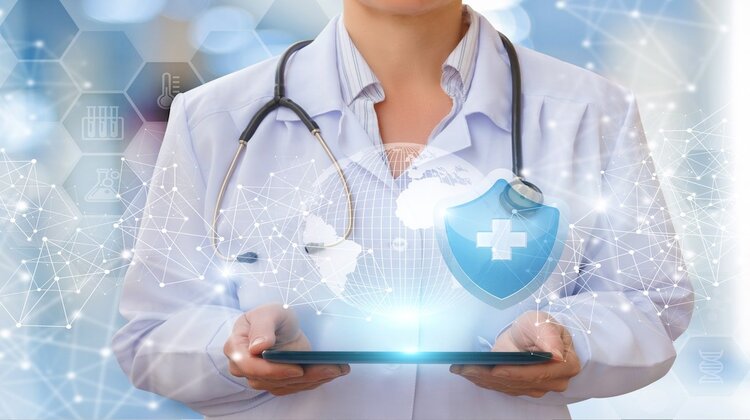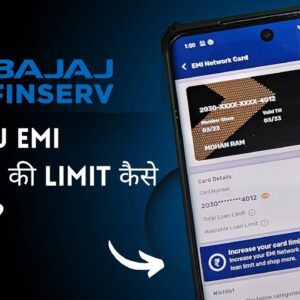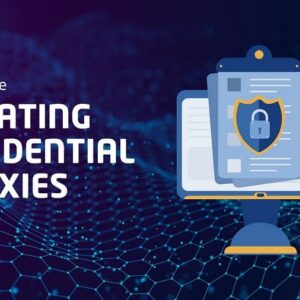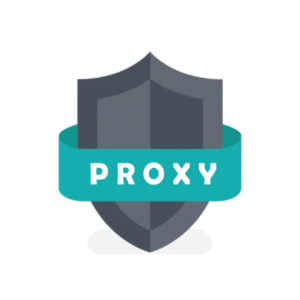
The Healthcare industry includes a ton of sensitive client information, and it frequently turns into an objective for cyberattacks. Also, it is responsibility of any top mobile app development company to protect applications and system from experiencing both money-related and reputational misfortunes. In any case, security breaks cost $6 trillion for healthcare companies because of an absence of healthcare cybersecurity mindfulness and little attention regarding data protection frameworks.

Healthcare Threats
Prior to covering famous network protection structures and discussing custom cost to develop an app, you really want to know your adversary, in particular, know about the primary dangers that can hurt your healthcare service business.
Malicious Network Traffic
Perhaps the most far-reaching threat is dubious links and files got from the network. This threat first accesses the organization from an application to a hostile webpage service and afterward shuts the organization and performs risky tasks (for instance, downloading malicious software).
Man-In-The-Middle Attack.
The primary thought is that attackers interfere with a continuous discussion or data transfer, infusing themselves in and behaving like a legitimate part of the discussion, taking classified and other significant user data.
Address Resolution Protocol Cache Poisoning.
ARP is the method for tricking your PC since an attacker infuses mistaken data into your network that translates into IP. From that point onward, your PC feels that the attacker’s PC is a legitimate network gateway, and subsequently, it has full admittance to all your data.
HTTPS Spoofing.
This attack technique incorporates cloning a genuine website with HTTPS yet changing a few details like changing English “e” to Cyrillic “е” in the URL address. Therefore, you visit a fake site filled with fishing programming that steals your important and confidential information.
Ransomware.
One more notorious method of a cyberattack is the point at which the victim’s documents are encoded so the attacker can blackmail cash in return for significant information. Other than data encryption, this attack can hinder admittance to entire computer systems, deadening the work of the business.
Phishing.
The last cyber threat that you can meet consistently when entering the Web. Attackers delivered customized messages utilizing the information they removed from sites, online media, and numerous different sources. The main reason for these letters is to raise the recipient’s interest, instigate pressure, or time appeal to the casualty’s vanity.
Presently, when you realize what can hurt your business work process and notoriety, it’s an ideal opportunity to discuss instruments that are meant to shield you from the previously mentioned dangers.
What Is Healthcare Cybersecurity Framework?
In general, the cybersecurity framework (CSF) is an aide in light of previously existing rules and practices. It assists associations with decreasing network safety hazards in healthcare and different fields and with keeping up with the administration interaction. Furthermore, a versatile and compelling methodology the framework offers assists heads with overseeing sensitive information and foreseeing cybersecurity-related threats.
Along these lines, to put it plainly, the frameworks are the guides for securing IT systems.
Be that as it may, a system doesn’t approach a solution. It gives common language and strategies for battling cyber threats, not claims to be the best way to get the data.
It’s a living report planned to be refreshed when the staff gains from its adoption. Same when technology and threats change. That is the motivation behind why the CSF focuses on questions organizations need to ask themselves – to deal with their dangers in the correct manner. And keep in mind that technologies, means, and standards might change; the principals remain.
We can characterize the main objectives of healthcare cybersecurity frameworks:
There are three base parts that each CSF has, and you ought to know about them:
Framework core. It’s a plan of network protection exercises and references coordinated to reach a specific result. Its capacity is to empower correspondence of cybersecurity risks across an organization.
Execution levels. They help relationships by characterizing how they see healthcare cybersecurity management. They help to observe the right degree of exhaustiveness for a security program and empower correspondence of cyber risks across an association.
Profiles. It’s plans of hierarchical objectives, premises, and resources against the framework core results. They adjust industry norms and best practices, support prioritization and estimation as indicated by the business needs.
How to Improve Cybersecurity in Healthcare?
To protect your healthcare business from attacks, it’s not to the point of utilizing security systems as it were. You really want to think a few stages forward and execute preventive measures to set up the most extreme security against cyberthreats. We’ve accumulated a few hints to take care of you.
Tip #1. Staff Education
One of the fundamental purposes behind cyberattacks is human variables, in particular the lack of awareness of staff about cyber threats and how they work and can hurt a business. Any error or carelessness in such a manner can prompt reputational and monetary losses. Healthcare cybersecurity training enables healthcare providers with the information they need to make intellectual decisions and be conscious when handling patient data.
Tip #2. Carrying out Severe Access Privileges
Severe information access controls shield patient information from unapproved access. Access freedoms permit just approved representatives of the clinical establishment to work with information. For most extreme security, the accompanying approval strategies ought to be presented:
- Secret key or PIN
- Access through cards or keys
- Access through face, finger impression, or retina recognition
Tip #3. Data Utilization Controls
This tip will assist you with controlling and screen malicious file activity. For instance, you can execute a system to obstruct unapproved activities with patient information, for example, transferring to the Web, sending unauthorized email, duplicating to external drives, or printing.
Tip #4. Log and Screen Use
Recording all information used helps to rapidly recognize unapproved activities with specific patient information. You will forever have a total synopsis of data regarding which clients are getting to what information, applications, and different assets, when and from what gadgets and spots. Regardless of whether a cyberattack has already occurred, the logs will assist you with rapidly setting up the break and making a move to kill it.
Tip #5. Diminishing the Risks of Connected Gadgets
With the expanding prevalence of the Web of Things, associated gadgets are not generally restricted to cell phones or tablets. Today they can take any structure, from health and fitness armbands and pulse monitors to cameras used to screen actual indoor security. For maximum security:
- Ensure that all connected gadgets should be on their own different network
- Ensure that all gadgets ought to be observed ceaselessly for abrupt changes in activity levels that could show a wellbeing issue.
- Cripple and eliminate non-essential services on gadgets
- Use multifaceted authentication
- Routinely check and install updates on gadgets to stay up to date
Tip #6. Backing Up Data
The outcomes of cyber attacks incorporate the disclosure of private data as well as the infringement of its integrity or complete evacuation. Regardless of whether your association is Stronghold Knox for cyberattacks, the smallest disaster can harm server centers and the valuable information in them. Therefore you should back up your information on a standard off-site premise with severe controls on data encryption, access, and other prescribed procedures to guard your backups.
How Much Does It Cost to Develop a Healthcare App?
The cost to develop an app depends on so many factors and according to the facilities it is going to offer. Prior to examining the expense, let us additionally investigate the team prerequisite. For a top mobile app development you may need:
Front End developer, Back End Developer, DevOps, Finance Manager, Compliance Expert, UI/UX Designer, Project manager, Quality Assurance Person.
Author Bio:
Hamza Iqbal did his major in Entrepreneurship and he is a Market Research by profession with having international content creation experience currently working with App Development Company. He generally like to write about Mobile App Development, Startups, Digital Marketing and SEO.
Author Profile
Latest entries
 BlogDecember 20, 2025AI Personalized Learning: The End of Traditional Classroom Teaching?
BlogDecember 20, 2025AI Personalized Learning: The End of Traditional Classroom Teaching? How ToDecember 9, 2025How to Increase Bajaj Finserv EMI Network Card Limit
How ToDecember 9, 2025How to Increase Bajaj Finserv EMI Network Card Limit ArticleOctober 23, 2025How to Use Rotating Residential Proxies
ArticleOctober 23, 2025How to Use Rotating Residential Proxies ArticleOctober 19, 2025Why You Should Use Geo-Targeted Proxies for Web Scraping
ArticleOctober 19, 2025Why You Should Use Geo-Targeted Proxies for Web Scraping